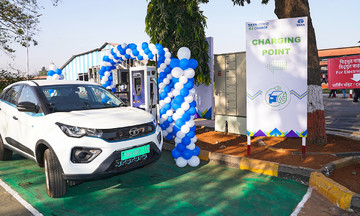Buses are a common mode of transport in many countries, especially for long-distance travel. However, over the decades, serious accidents involving these vehicles, particularly sleeper buses, have forced many countries to tighten regulations regarding their design, operation, and safety inspections.
Each country has its own approach reflecting its infrastructure, monitoring capacity, management capabilities, and traffic culture. One of the countries with strict regulations for sleeper buses is India.
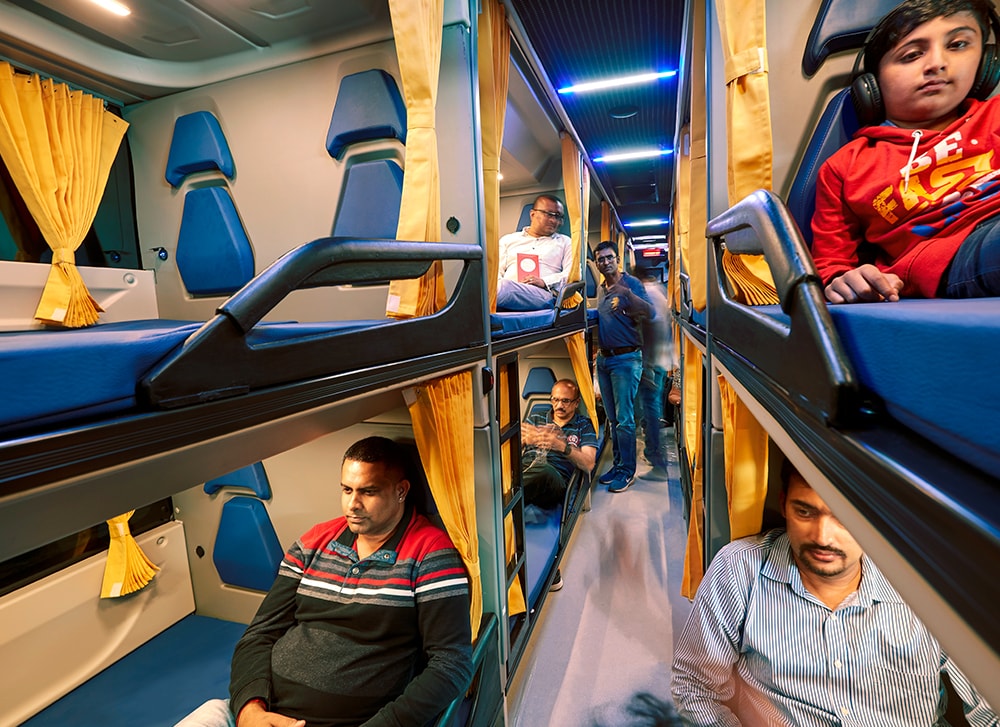 |
Passengers on a sleeper bus in India. Photo: Justdial |
Passengers on a sleeper bus in India. Photo: Justdial
Why are sleeper buses a popular mode of transport in India?
India's large geographical area and uneven population distribution result in a high demand for interstate travel. Although India's railway network is well-developed, it is often overcrowded, with tickets scarce during peak seasons. Trains also operate on fixed schedules, unlike the more flexible private bus routes. Therefore, buses, especially sleeper buses, become the preferred choice for many due to their affordability, convenience, and flexible pick-up and drop-off options.
According to redBus statistics from 2024, India's private intercity bus market had 44.78 million passengers using the services of over 5,000 operators, generating an estimated total ticket revenue of over 5.5 billion USD. For long journeys, 51% of passengers booked sleeper berths, accounting for 72% of total revenue, while seating accounted for approximately 28%.
The potential risks of sleeper buses
Sleeper bus travel in India carries inherent risks, with several serious accidents occurring, such as the Buldhana bus fire in 7/2023. The bus collided with an overhead pole on the highway, overturned, and the main door was blocked. Leaking fuel then ignited upon contact with the hot exhaust pipe. Passengers were unable to escape, resulting in 25 fatalities, mostly while they were asleep. The driver was later found to have had alcohol in his system and was drowsy while driving. This was one of the most severe traffic tragedies in India that year.
Following this and a series of previous accidents, the Indian government implemented measures to improve sleeper bus safety. One of these measures was mandating strict adherence to the AIS-119 standard, effective since 2018. However, lax monitoring of renovations and inspections, coupled with insufficient penalties, led to years of buses circumventing the law.
Mandatory standards for sleeper buses in India
The AIS-119 standard, updated in 2023, stipulates a maximum of two berths (1x1) per row, arranged one on each side of the aisle, or three berths (2x1) per row, with two berths on one side and one on the other. This regulation still permits two levels of berths, provided each level adheres to aisle width and height regulations. The previous 4-berth (2x2) layout per row is now prohibited due to insufficient escape space in emergencies.
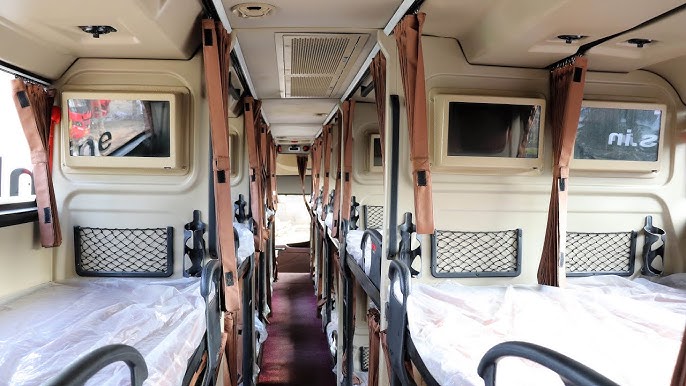 |
The 2x1 berth layout on an MG Starz sleeper bus in India. Photo: Motorindia |
The 2x1 berth layout on an MG Starz sleeper bus in India. Photo: Motorindia
The AIS-119 standard also mandates at least two separate escape routes, including the main door and at least one emergency exit. The emergency exit can be a side door, a roof hatch, or a rear door, as long as it allows passengers to exit quickly in emergencies. These doors must be unobstructed, large enough for an adult to pass through easily, and easily opened from the inside, even in power outages or smoky conditions. Aisles and emergency exit locations must be marked with reflective tape (similar to those on airplanes).
If there isn't enough space for a large emergency exit, the bus can be equipped with emergency windows with quick-release handles or glass breakers. The standard also requires clearly displayed escape route diagrams inside the bus, along with emergency lighting to assist passengers in darkness or smoke-filled conditions.
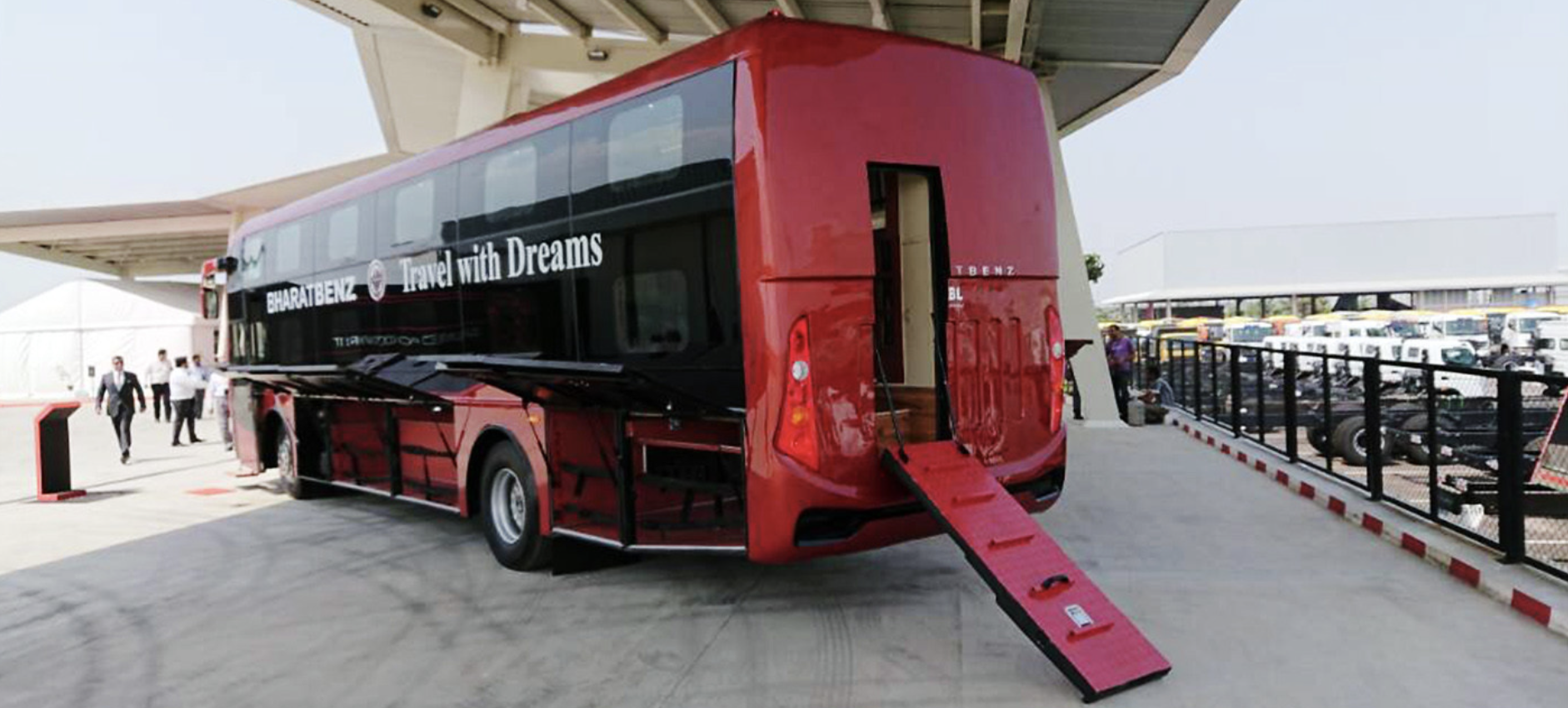 |
Rear emergency exit on a BharatBenz sleeper bus. Photo: JCBL |
Rear emergency exit on a BharatBenz sleeper bus. Photo: JCBL
Furthermore, sleeper buses must be equipped with fire detection and suppression systems. The fire detection system should have smoke or heat sensors installed in the passenger compartment, engine compartment, and luggage compartment. Upon detecting any anomaly, the system must immediately trigger audible and visual alarms in the driver's cabin and passenger area, even when the engine is off.
Buses must also have an automatic fire suppression system in the engine compartment, using non-toxic and non-conductive extinguishing agents. Warning horns and lights should be placed in visible locations, accompanied by clear instructions for passengers. All these devices must undergo regular inspection and maintenance and be certified.
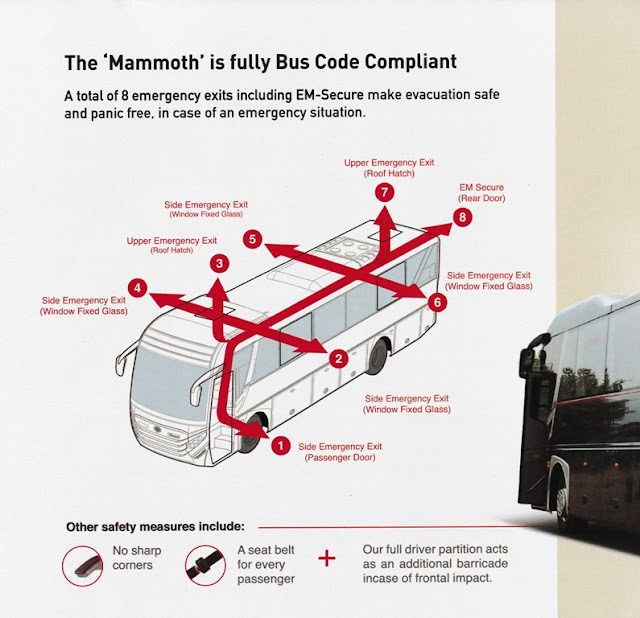 |
8 escape routes on an MG Man Mammoth sleeper bus in India. Photo: Svmchaser |
8 escape routes on an MG Man Mammoth sleeper bus in India. Photo: Svmchaser
Finally, the berth surface must not be inclined more than 8 degrees from horizontal to prevent passengers from sliding down during sudden braking or while traveling uphill. Each berth, especially the upper ones, must have handrails for safe access. Handrails must also be provided in areas where balance might be compromised, such as the main aisle, doorways, and transition areas between compartments.
Besides mechanical design, the AIS-119 standard also requires all components, including bedding, partitions, curtains, ceilings, and floors, to be made of fire-retardant materials that can self-extinguish and limit the spread of toxic smoke during a fire.
Pham Hai









